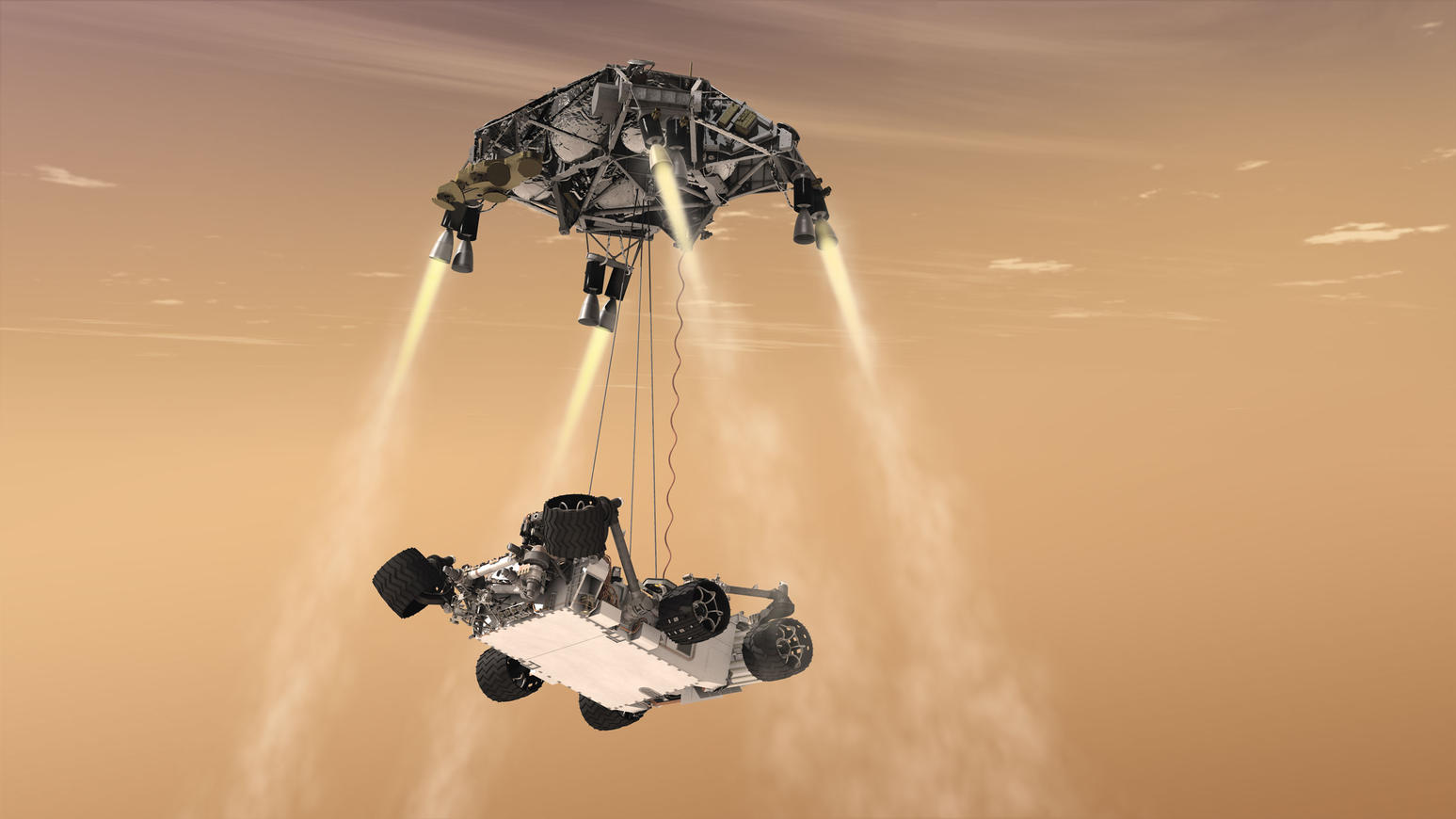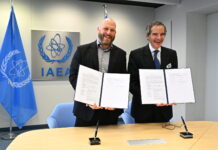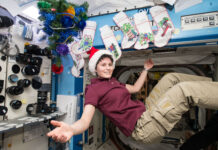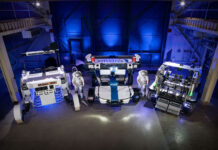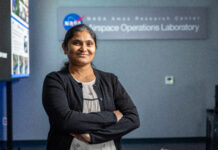Celebrating 12 Years of NASA’s Curiosity Rover: A Milestone in Mars Exploration
Twelve years ago, NASA achieved a groundbreaking feat by landing its six-wheeled scientific laboratory, the Curiosity rover, on the surface of Mars. This event marked a significant milestone in space exploration, utilizing an innovative technology called the sky crane maneuver. This method involved lowering the rover to the Martian surface using a robotic jetpack, a daring and unprecedented approach at the time.
The Journey of Curiosity Rover
The Curiosity rover mission, which began on August 5, 2012, continues to make remarkable discoveries as it climbs the foothills of a Martian mountain. The rover’s successful landing itself was a monumental achievement, but the method used to achieve this feat was equally impressive. The sky crane maneuver, a novel technique, played a crucial role in the mission’s success.
A robotic jetpack, known as the sky crane, delivered Curiosity to its designated landing area. The jetpack then lowered the rover to the Martian surface using nylon ropes before cutting the ropes and flying off to crash-land safely away from the rover. This entire process was out of sight for Curiosity’s engineering team, who anxiously awaited the rover’s signal at NASA’s Jet Propulsion Laboratory (JPL) in Southern California. The tension-filled seven minutes of descent ended in jubilation when the team received confirmation of a successful landing.
Necessity: The Mother of Innovation
The sky crane maneuver was not just a bold choice but a necessary one. Curiosity was too large and heavy to land using the airbag technique employed by its predecessors. The earlier rovers, such as Spirit and Opportunity, were encased in airbags that allowed them to bounce across the Martian surface. However, this method was not feasible for a rover as substantial as Curiosity. The sky crane technology also offered greater precision, resulting in a smaller landing ellipse, which is the area within which the rover could land.
This precise landing capability was further enhanced during the February 2021 landing of NASA’s newest Mars rover, Perseverance. The sky crane technology was refined with terrain relative navigation, enabling the SUV-sized rover to land safely in an ancient lake bed filled with rocks and craters.
A Legacy of Innovation
JPL has been a pivotal player in NASA’s Mars landings since 1976, starting with the Viking landers. These landers used expensive, throttled descent engines to touch down on Mars. However, in 1997, JPL introduced a new approach with the Mars Pathfinder mission. Here, a cluster of giant airbags inflated around the lander, which was then brought to a halt above the surface by retrorockets. The airbag-encased spacecraft would then drop to the Martian surface, bouncing multiple times before coming to rest.
This airbag technique was successfully used again for the Spirit and Opportunity rovers in 2004. However, the limitations of this method became apparent as there were only a few safe landing sites on Mars where the airbags wouldn’t be punctured or cause the spacecraft to roll uncontrollably.
Al Chen from JPL, who played critical roles in the entry, descent, and landing teams for both Curiosity and Perseverance, noted the challenges of finding safe landing sites using airbags. The realization that airbags were not a viable option for larger rovers like Curiosity led to the development of the sky crane maneuver.
The Evolution of the Sky Crane Maneuver
In the early 2000s, engineers began conceptualizing a “smart” landing system. Advances in radar technology provided real-time velocity readings, crucial for controlling the descent of spacecraft. Additionally, new types of engines could nudge the spacecraft towards specific locations or even provide lift, steering it away from hazards. These innovations laid the foundation for the sky crane maneuver.
Rob Manning, a JPL Fellow who worked on the initial concept in 2000, recalled the initial skepticism about placing the jetpack above the rover instead of below it. This unconventional approach was necessary to avoid the debris and potential hazards caused by thrusters being too close to the ground. By placing the thrusters above the rover, the team ensured that the rover’s wheels could touch down directly on the surface, eliminating the need for a landing platform and saving weight.
One of the significant challenges was ensuring that the rover, suspended from ropes, wouldn’t swing uncontrollably. Engineers drew inspiration from large cargo helicopters on Earth, known as sky cranes, which use similar technology to control swinging. This solution allowed Curiosity’s jetpack to sense and control any swinging, ensuring a safe landing.
Al Chen emphasized that this new technology provided a fighting chance to land in the desired location on Mars. Moreover, the sky crane concept could be adapted for larger spacecraft, not just on Mars but anywhere in the solar system. Rob Manning highlighted the future potential of this technology, envisioning payload delivery services that could lower equipment to the surface of the Moon or other celestial bodies without ever touching the ground.
Curiosity’s Ongoing Mission
Curiosity was built by NASA’s Jet Propulsion Laboratory, managed by Caltech in Pasadena, California. JPL leads the mission on behalf of NASA’s Science Mission Directorate in Washington. Over the past twelve years, Curiosity has made significant contributions to our understanding of Mars. It has provided valuable data on the planet’s climate and geology and assessed whether the selected field site inside Gale Crater ever offered environmental conditions favorable for microbial life.
As Curiosity continues its journey, it remains a testament to human ingenuity and the relentless pursuit of knowledge. The success of the Curiosity mission has paved the way for future Mars missions, including the Perseverance rover, which continues to build on the technological advancements introduced by Curiosity.
More About the Mission
For those interested in learning more about the Curiosity mission, additional information is available on NASA’s official website. The mission’s continued success highlights the importance of innovation and collaboration in space exploration, providing a foundation for future missions to Mars and beyond.
For more details, you can visit the official NASA Curiosity mission page: NASA Curiosity Mission.
Contact Information
For further inquiries, you can contact the following individuals:
- Andrew Good
Jet Propulsion Laboratory, Pasadena, Calif.
818-393-2433
andrew.c.good@jpl.nasa.gov - Karen Fox / Alana Johnson
NASA Headquarters, Washington
202-358-1600
karen.c.fox@nasa.gov / alana.r.johnson@nasa.govThe journey of the Curiosity rover is a remarkable chapter in the story of space exploration. Its achievements continue to inspire and drive the quest for knowledge, demonstrating what is possible when innovative engineering meets human curiosity.
For more Information, Refer to this article.




























